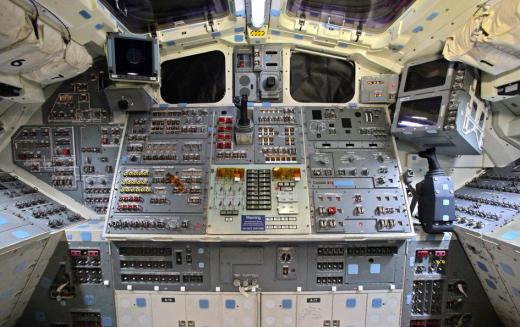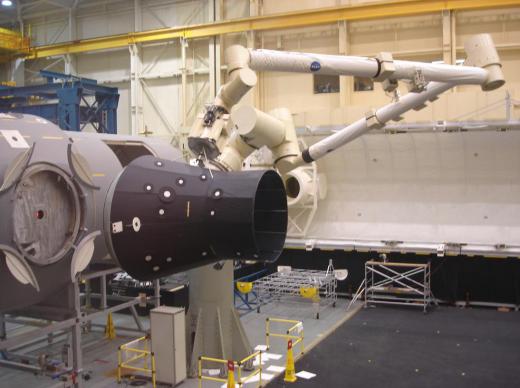What Is the Canadarm?
 Mary McMahon
Mary McMahon
The Canadarm was a robotic manipulator originally designed for use on board the space shuttle. Commissioned in 1975 and first launched in 1981, it was an important engineering development in the history of manned spaceflight. It demonstrated the potential applications of robotic devices in space, and also firmly established Canadian engineering in space research, even though Canada did not have a space program. Several iterations of the device were produced for use on board various missions.
This device consists of a long hinged arm controlled robotically from the flight deck. Known officially as the Shuttle Remote Manipulator System (SRMS), it is designed to allow astronauts to move payloads in and out of the space shuttle. It can also be used for other tasks, ranging from repairs to the Hubble Telescope to assembly of the International Space Station (ISS). A second generation device, Canadarm2, was installed permanently on the ISS.

Development work for various aspects of spaceflight may be contracted out by agencies like the National Aeronautics and Space Administration (NASA). While agencies often prefer to work with domestic companies, international cooperation is not uncommon, as illustrated by the Canadarm. NASA ordered a device it could use to manage shuttle payloads and potentially use for other activities in space that required grasping and manipulating objects. Throughout their deployment, the various Canadarm models never failed, although one was destroyed in the 2003 Columbia disaster.

Inventions like the Canadarm illustrated the potential of manned spaceflight, showing how astronauts could use technology to accomplish tasks and increase personal safety. The device was capable of very precise movements measured in small increments for critical adjustments. Astronauts required some training to learn how to use it safely and effectively. After 2003, in addition to being used for maneuvering cargo, the Canadarm was also deployed with video and monitoring systems to inspect the exterior of the Space Shuttle for signs of damage that might create safety problems during reentry.

Some examples of Canadarm models are on display at aeronautics museums, for people with an interest in seeing them. These and other artifacts are carefully maintained by conservation experts to make sure they will be available for future generations to enjoy. The technical specifications are also maintained in archives, to allow engineers to learn more about the design and construction of the Canadarm. This information can be interesting from a purely historical perspective, and can also provide insight into designs for more advanced robotics.
AS FEATURED ON:
AS FEATURED ON:














Discuss this Article
Post your comments